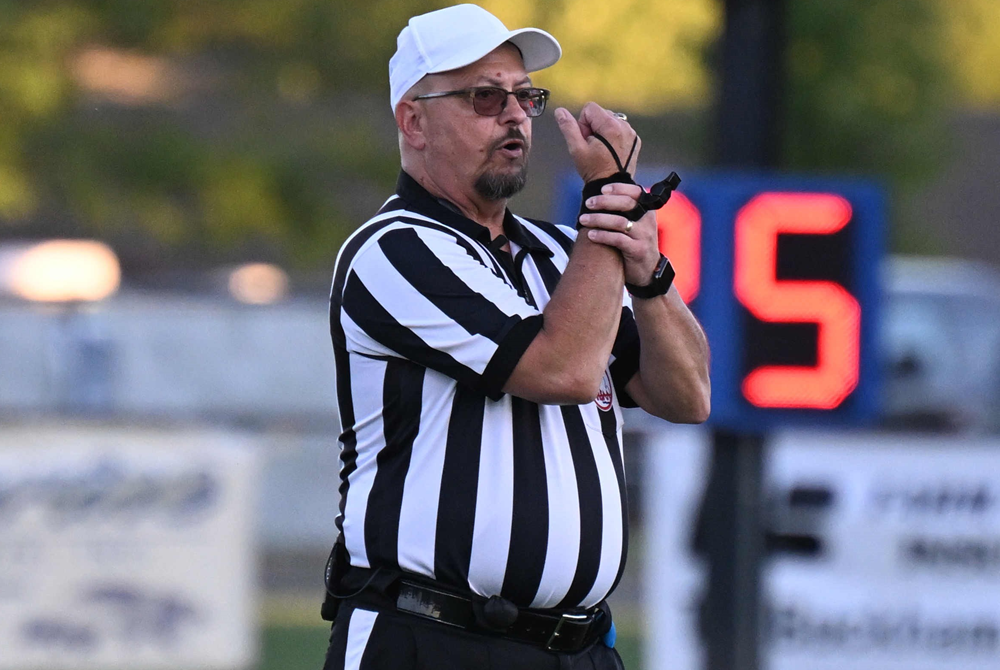
Be the Referee: Slide Rule
May 26, 2016
This week, MHSAA assistant director Mark Uyl discusses how high school baseball and softball remains ahead of the curve when it comes to avoiding collisions when runners slide.
Be The Referee is a series of short messages designed to help educate people on the rules of different sports, to help them better understand the art of officiating, and to recruit officials.
Below is this week's segment - Slide Rule - Listen
Recently there’s been a lot of conversation and discussion about Major League Baseball’s new slide rule – both at second base, as well as some of the new collision rules that are in effect around home plate.
For many years at the high school level, both baseball and softball playing rules have been ahead of the curve in keeping players safe.
In both high school baseball and softball, when runners do elect to slide, they must slide directly into the base on a force play. On those plays at the plate, runners must do everything they can do to avoid a collision with the catcher; by either making a legal slide, giving themselves up, or moving in a way to make those collisions at home plate a thing of the past.
Past editions:
May 19: Wooden Bats - Listen
May 12: Baseball Pitch Counts - Listen
May 5: Home Run or Not? - Listen
April 28: Norris Award Winner Linda Hoover - Listen
April 21: Legacy Program - Listen
April 14: Baseball/Softball Replay - Listen
March 24: Use of the Monitor - Listen
March 17: Block/Charge - Listen
March 10: Ball Stuck on the Rim - Listen
March 3: Three Seconds - Listen
Feb. 25: Deciding the Game - Listen
Feb. 18 : Cheer Safety - Listen
Feb. 11: Primary Areas - Listen
Feb. 4: Block/Charge Calls - Listen
Jan. 28: Dive on the Floor - Listen
Jan. 21: Hockey Officials' Options - Listen
Jan. 14: Recruiting Officials - Listen
Jan. 7: Wrestling Weight Monitoring - Listen
Dec. 31: Respect for Referees - Listen
Dec. 24: Basketball Instant Replay - Listen
Dec. 17: Basketball Communication - Listen
Dec. 10: Basketball Excessive Contact - Listen
Nov. 26: Pregame Communication - Listen
Nov. 19: Trick Plays - Listen
Nov. 12: 7-Person Football Mechanics - Listen
Nov. 5: Make the Call: Personal Fouls - Listen
Oct. 29: Officials Demographics - Listen
Oct. 15: Make the Call: Intentional Grounding - Listen
Oct. 8: Playoff Selection - Listen
Oct. 1: Kick Returns - Listen
Sept. 24: Concussions - Listen
Sept. 17: Automatic First Downs - Listen
Sept. 10: Correcting a Down - Listen
Sept 3: Spearing - Listen
Aug. 27: Missed Field Goal - Listen

Be the Referee: Football Holding
By
Sam Davis
MHSAA Director of Officials
August 27, 2024
Be The Referee is a series of short messages designed to help educate people on the rules of different sports, to help them better understand the art of officiating, and to recruit officials.
Below is this week's segment – Football Holding - Listen
In football, it’s often said that holding happens on every play. But does it?
When an offensive player uses their hands or arms to illegally restrain a defensive player – that’s holding. This typically happens when blockers grab or pull defensive players away from their path – impeding their ability to make a play. The penalty is 10 yards from the previous spot.
Defensive players can be flagged for holding as well. That’s also a 10-yard penalty. An example of defensive holding is when a cornerback grabs a receiver to slow him down before the ball is thrown. If that same contact happens while the pass is in the air – then it’s pass interference. Defensive pass interference is a 15-yard penalty.
PHOTO A football official signals holding during a 2023 game. (Photo by Gary Shook.)

